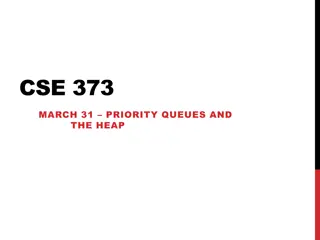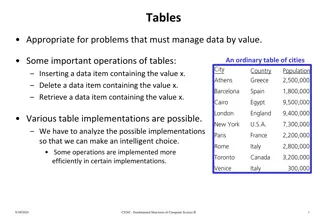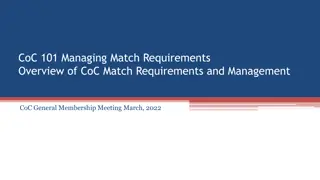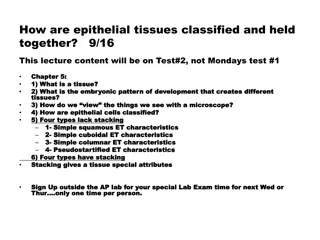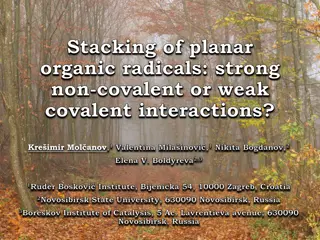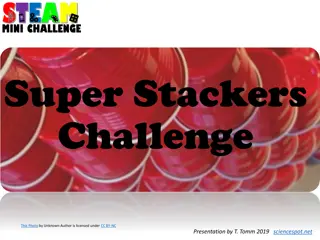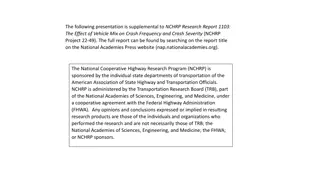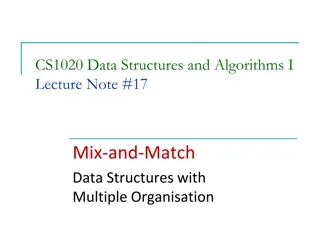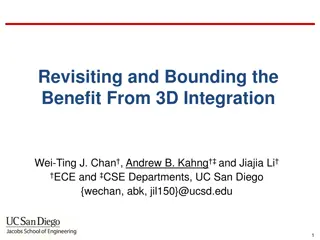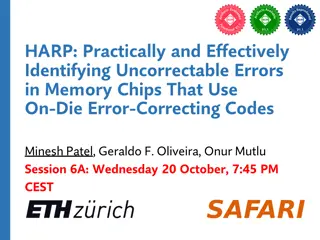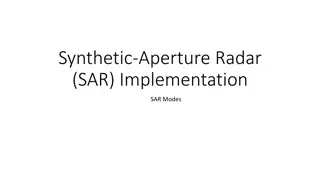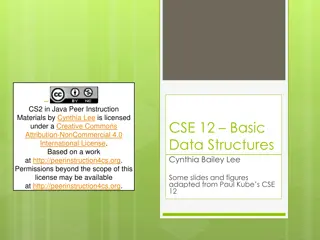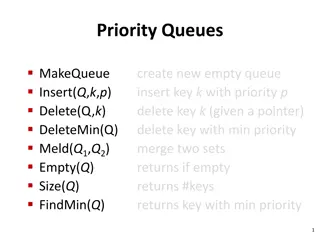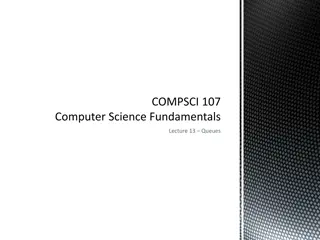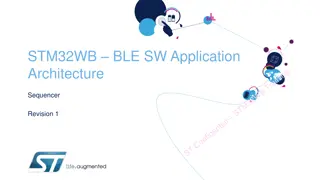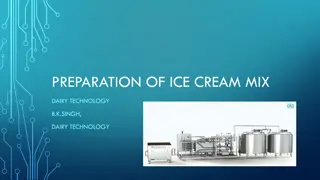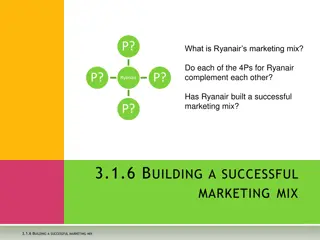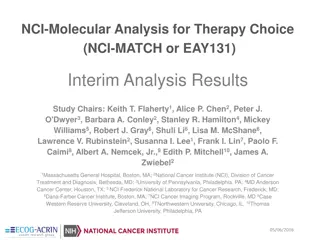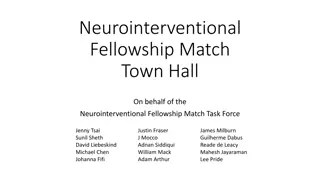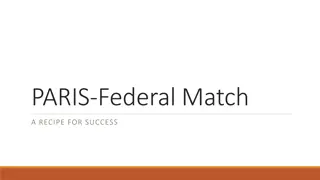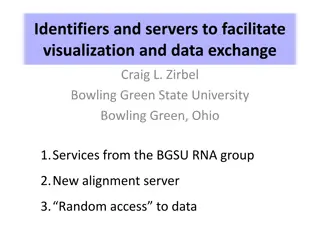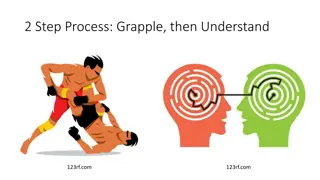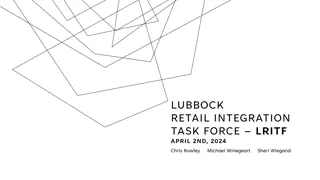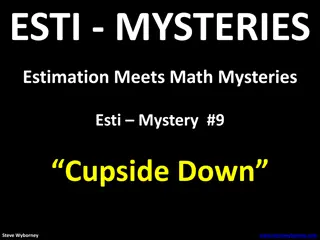Enhancing 3DIC Implementations with Mix-and-Match Die Stacking
This study by Kwangsoo Han, Andrew B. Kahng, and Jiajia Li delves into the improved performance of 3DIC implementations through the mix-and-match die stacking technique. By integrating slow and fast tiers, they aim to enhance parametric yield and optimize design-stage processes for a more efficient integration of 3DICs.
- 3DIC Implementations
- Die Stacking
- Mix-and-Match Integration
- Design Optimization
- Performance Improvement
Download Presentation

Please find below an Image/Link to download the presentation.
The content on the website is provided AS IS for your information and personal use only. It may not be sold, licensed, or shared on other websites without obtaining consent from the author. Download presentation by click this link. If you encounter any issues during the download, it is possible that the publisher has removed the file from their server.
E N D
Presentation Transcript
Improved Performance of 3DIC Implementations Through Inherent Awareness of Mix-and-Match Die Stacking Kwangsoo Han, Andrew B. Kahng and Jiajia Li University of California at San Diego http://vlsicad.ucsd.edu/ 1 A. B. Kahng, DATE-16, Session 2.4
Mix-and-Match Integration Interesting idea proposed by previous works Integrate slow copies of tiers with fast copies of tiers to improve 3DIC parametric yield == Mix-and-match integration SS Tier 1 wafer/die Fast Tier 1 3D integration Slow Tier 0 FF Tier 0 wafer Wafer-to-wafer (die-to-wafer) bonding: integrate SS wafer/die with FF wafer/die (SS Tier 0 wafer/die + FF Tier 1 wafer or FF Tier 0 wafer/die + SS Tier 1 wafer) Monolithic 3D: adapt process so that Tier 1 is fast if Tier 0 is known to be slow 2 A. B. Kahng, DATE-16, Session 2.4
Agenda Motivation Related Works Our Methodology Experimental Results Conclusions 3 A. B. Kahng, DATE-16, Session 2.4
Mix-and-Match Needs Design-Stage Optimization Mix-and-match integration offers performance benefits over the conventional worst-case analysis -20 -60 WNS (ps) -100 XX-YY = XX Tier 0 + YY Tier 1 Technology: 28FDSOI 3D netlist is bipartitioned with minimum net cut 75ps -140 -180 SS-SS SS-FF FF-SS No holistic design for eventual integration of 3DICs With mix-and-match integration, blue cut has maximum slack, red cut has minimum slack Our goal: Study design-stage optimization for mix-and-match SS (FF) Bad setup and hold slacks FF (SS) Benefit from mix-and-match SS (FF) FF (SS) 4 A. B. Kahng, DATE-16, Session 2.4
Challenges in Mix-and-Match-Aware Partitioning Examples with different optimal solutions for different objectives Assumption: (i) Uniform stage delay (dSS = 30ps, dFF = 10ps) (ii) PathAC: 26 stages, PathBC: 30 stages (iii) Balance criteria: 50% for each die Objective: (i) Minimize delay of PathAC (ii) Minimize delay of PathBC (iii) Minimize worst-case delay over the two paths (iv) Minimize worst-case delay over the two paths in regime of large VI delay impact (dVI) 3 3 6 3 3 dVI= 60ps dVI= 10ps DAC = 530ps DBC = 680ps DAC = 640ps DBC = 610ps DAC = 620ps DBC = 620ps DAC = 680ps DBC = 720ps A Tier 1 Tier 0 C B 5 20 18 13 15 14 2 7 6 10 5 5 1 9 5 A. B. Kahng, DATE-16, Session 2.4
Challenges in Mix-and-Match-Aware Partitioning Optimal cut location on one path conflicts with those on other paths Example has different optimal solutions for different objectives Vertical interconnect (VI) delay impact Asymmetric path delay distribution due to process variation 6 A. B. Kahng, DATE-16, Session 2.4
Agenda Motivation Related Works Our Methodology Experimental Results Conclusions 7 A. B. Kahng, DATE-16, Session 2.4
Related Works Mix-and-match die stacking [Ferri08] integrates fast (slow) CPU die with slow (fast) L2 cache die to improve parametric yield [Garg13] formulates mathematical programming to optimize mix-and- match stacking [Chan13]uses mix-and-match stacking to optimize reliability of 3DICs [Juan14] performs thermal-aware matching and stacking But no design-stage optimization has been studied Netlist partitioning for 3DICs [Li06] uses simulated annealing engine to partition block into tiers [Thorolfsson10] uses hMetis to partition netlist with minimized #VIs [Hu10] proposes a multi-level framework for 3D partitioning [Cong07][Panth15] assign cells to tiers through transformations of a 2D placement These do not comprehend mix-and-match die stacking 8 A. B. Kahng, DATE-16, Session 2.4
Agenda Motivation Related Works Our Methodology Experimental Results Conclusions 9 A. B. Kahng, DATE-16, Session 2.4
ILP-Based Partitioning Method ILP formulation MinimizeDmax // Minimize max path delay in regime of mix-and-match Such that i, i xi - xi // indicators of VI insertions i, i xi - xi for all adjacent cells Delay bound (dij (1-xi) + dij xi) + i, i dVI Dmax for all paths Area-balancing criterion ai xi - ai (1-xi) ai ai (1-xi) - ai xi ai Notations Dmax maximum path delay xi binary indicator of cell on Tier 0 (xi = 0) or Tier 1 (xi = 1) i, i binary indicator of whether a VI (cut) exists dij cell delay at jth process corner dVI delay impact of VI insertion ai cell area area-balancing criterion (e.g., = 5%) 10 A. B. Kahng, DATE-16, Session 2.4
Heuristic Partitioning Method (1) Maximum-cut on timing-critical sequential graph 1. Classify paths according to their slacks and VI delay impact Type-I Timing non-critical paths Type-II Timing-critical paths without tolerance of VI insertion Impact of VI insertion timing benefit from mix-and-match Type-III Timing-critical paths with tolerance of VI insertion Impact of VI insertion < timing benefit from mix-and-match 2. Extract restricted sequential graph containing only Type-II/Type-III paths 3. Collapse vertices connected with Type-II paths into one vertex 4. Perform maximum cut on updated graph 11 A. B. Kahng, DATE-16, Session 2.4
Heuristic Partitioning Method (2) Timing-aware multi-phase FM partitioning Issue: Hard to foresee slack benefits with existence of VI delay impact Moving one cell degrades slack, but following moves compensate VI delay impact Our solution: Cluster cells with given range of cluster size Partitioning solution Clustering with cluster size [L2, U2] Clustering with cluster size [L2, U2] Clustering with cluster size [Lk, Uk] One phase Timing-aware FM Timing-aware FM Timing-aware FM Partitioning solution with maximum slack 12 A. B. Kahng, DATE-16, Session 2.4
Agenda Motivation Related Works Our Methodology Experimental Results Conclusions 13 A. B. Kahng, DATE-16, Session 2.4
Design of Experiments Testcases: ARM Cortex M0 and DMA, AES, VGA from OpenCores website Technology: 28FDSOI, dual-VT Tools ILP solver: CPLEX v12.5 Synthesis: Synopsys Design Compiler H-2013.03-SP3 P&R: Cadence EDI System v12.0 Signoff timer: Synopsys PrimeTime H-2013.06-SP2 Two sets of experiments Validation of our heuristic partitioning method Extend existing 3DIC implementation flows with our optimization 14 A. B. Kahng, DATE-16, Session 2.4
Calibration of Heuristic Partitioning ILP-based optimization leads to near-optimal solution Vary delay impact of VI insertion, process corners Heuristic consistently achieves < 30ps slack difference compared to ILP-based partitioning solution 110 ILP Heuristic 90 70 WNS (ps) 50 30 10 -10 Design Clk period -30 DMA 0.6ns -50 dVI(ps) 10 30 50 10 30 50 10 30 50 3 SS + 3 FF 2 SS + 3 FF 3 SS + 2 FF 15 A. B. Kahng, DATE-16, Session 2.4
Validation of Our Method Extend two existing 3DIC implementation flows (i) GT2012, and (ii) Shrunk2D to include our partitioning method for mix-and-match Up to 16% performance improvement 150 Brute-force (orig) Shrunk2D (orig) Brute-force (opt) Shrunk2D (opt) GT2012 (opt) GT2012 (orig) 100 50 0 WNS (ps) -50 -100 Design Clk period -150 M0 1.2ns -200 AES 1.1ns -250 VGA 1.0ns -300 ARM M0 AES VGA 16 A. B. Kahng, DATE-16, Session 2.4
Agenda Motivation Related Works Our Methodology Experimental Results Conclusions 17 A. B. Kahng, DATE-16, Session 2.4
Futures and Conclusions Design-stage optimization for mix-and-match die stacking ILP-based and heuristic partitioning methodologies directly maximize design s slack in the regime of mix- and-match Up to 16% timing improvement compared to conventional 3D partitioning solution Future works Integration of design-stage and die- and/or wafer-level optimization Clock tree synthesis for mix-and-match stacking 18 A. B. Kahng, DATE-16, Session 2.4
THANK YOU ! 19 A. B. Kahng, DATE-16, Session 2.4




